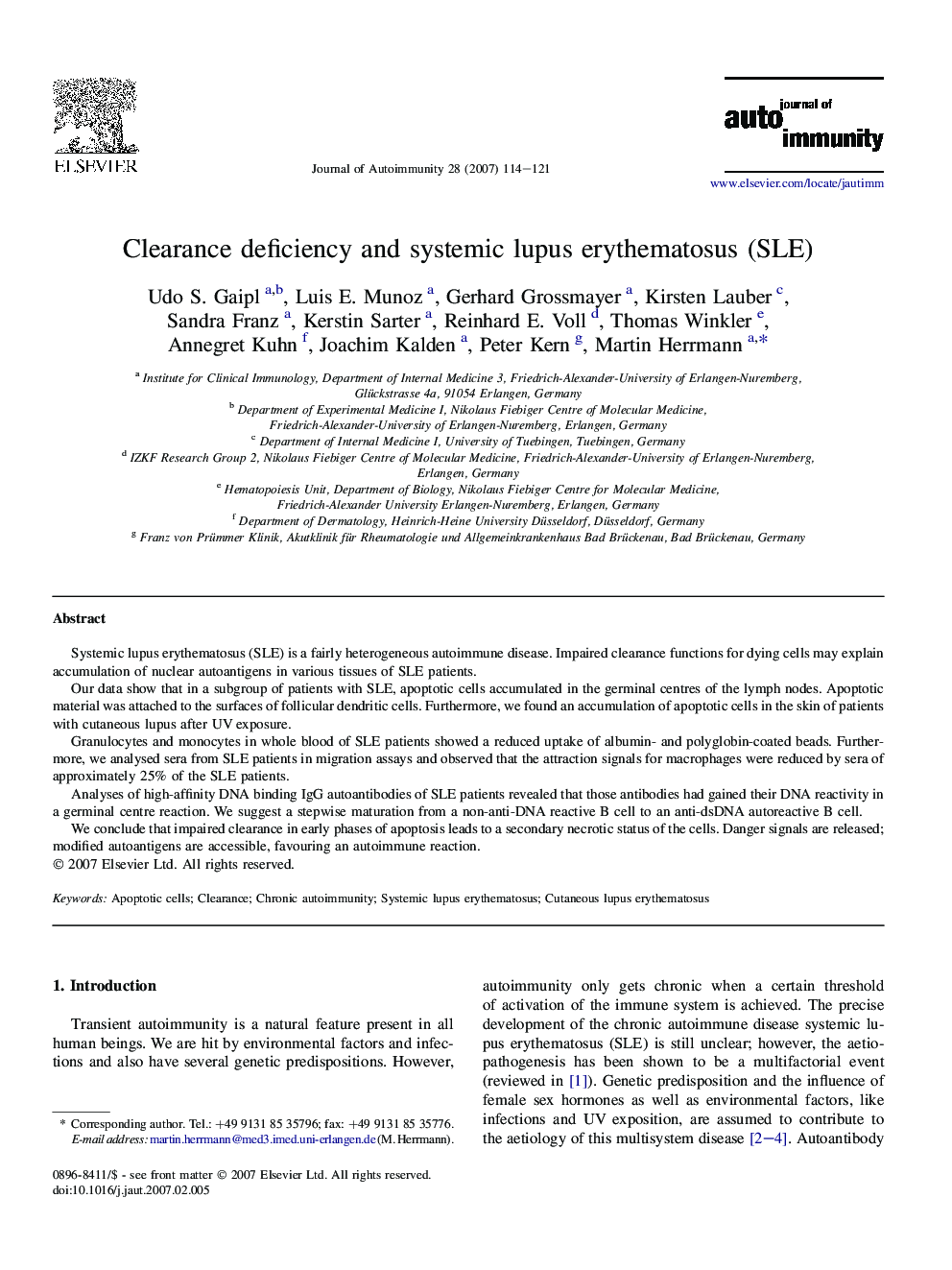| Article ID | Journal | Published Year | Pages | File Type |
|---|---|---|---|---|
| 3368461 | Journal of Autoimmunity | 2007 | 8 Pages |
Systemic lupus erythematosus (SLE) is a fairly heterogeneous autoimmune disease. Impaired clearance functions for dying cells may explain accumulation of nuclear autoantigens in various tissues of SLE patients.Our data show that in a subgroup of patients with SLE, apoptotic cells accumulated in the germinal centres of the lymph nodes. Apoptotic material was attached to the surfaces of follicular dendritic cells. Furthermore, we found an accumulation of apoptotic cells in the skin of patients with cutaneous lupus after UV exposure.Granulocytes and monocytes in whole blood of SLE patients showed a reduced uptake of albumin- and polyglobin-coated beads. Furthermore, we analysed sera from SLE patients in migration assays and observed that the attraction signals for macrophages were reduced by sera of approximately 25% of the SLE patients.Analyses of high-affinity DNA binding IgG autoantibodies of SLE patients revealed that those antibodies had gained their DNA reactivity in a germinal centre reaction. We suggest a stepwise maturation from a non-anti-DNA reactive B cell to an anti-dsDNA autoreactive B cell.We conclude that impaired clearance in early phases of apoptosis leads to a secondary necrotic status of the cells. Danger signals are released; modified autoantigens are accessible, favouring an autoimmune reaction.
